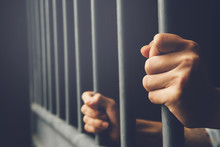Introduction
In the complex world of criminal justice and incarceration, the prison industrial complex plays a huge part. The concept of a prison-industrial complex encompasses an amalgamation of industries and stakeholders intricately intertwined with the perpetuation and expansion of the penal system. This intricate network entails diverse parties reaping both financial and political gains from the phenomenon of mass incarceration. This article delves into the various types of prison systems established in different countries and tries to understand where they lie on the spectrum of rehabilitation and torture. It is also an objective to shed light on how prison systems are sustained because of the continuous exploitation of marginalised communities and minority groups.
There are multiple businesses within the prison complex that benefit from incarceration. Prison employees, including correctional officers, administrative staff, and healthcare professionals, enjoy job security, increasing mass incarceration. Beyond prison employees, food and commissionary suppliers benefit from mass incarceration. Since the prisoners cannot choose between different suppliers, they are forced to accept the prices quoted by the suppliers, even with the meagre wages they make behind bars. According to a study by Ben & Jerry’s, companies like Aramark make millions of dollars in profits by supplying meals to about 600 prisons in the United States. The money keeps coming in even when they do a subpar job. The construction and architectural industries benefit from building and expanding prisons and detention centres.
There are private prisons in use in at least 11 additional nations worldwide. England, Scotland, Wales, Germany, France, South Africa, New Zealand, Australia, Japan, Brazil, and Chile are among these nations. However, these nations’ levels of privatisation differ. Several countries, including South Africa, New Zealand, Australia, South Africa, Scotland, and Wales, operate a large number of entirely private prisons. (Henry, 2019) Such privatised prison systems come with even more subsidiary businesses receiving outsourced work. Companies that provide probation and parole services in such systems often charge fees to individuals under supervision, creating a financial incentive to keep people under supervision for longer periods. Studies have found differences in the pattern of incarceration in countries with privatised and centralised prison systems.
Comparison of prison systems in different countries
Prison systems can be differentiated based on the level of castigation. The focus of prison systems can range from punishment to rehabilitation. To put things into perspective, we will be analysing the prison systems of a few nations, starting with Norway.
Norway is famously known all across the globe for its rehabilitation-style prison system. One of its distinctive features is that Norway does not believe in big, centralised jails; rather, it focuses more on small community-based correctional facilities. According to the Norwegian government, prisoners should be housed close to where they grew up so that they can stay in touch with their spouses, friends, and relatives. There is a strong emphasis placed on relationships so that incarcerated individuals have a strong support system after their release. The Norwegians, however, did not always have this system of belief and, consequently, their prison system. In the 1990s, roughly 70% of prisoners recommitted crimes within two years of release in Norway. Norwegian politicians recognised the ineffectiveness of the current system. Recidivism was high, as was crime. There were a lot of attacks, riots, and escapes from prisons. A system overhaul was required. Norwegian lawmakers acted upon this issue, and today Norway enjoys the lowest recidivism rate in the world.
On the other side of the spectrum lies Turkmenistan. Turkmenistan is often under the radar of human rights associations like Amnesty International for its lack of transparency in its prison system, with reports of widespread torture, forced labour, and inhumane conditions. Like many other totalitarian regimes, Turkmenistan, a former USSR member, has often been warned by international agencies for their inhumane behaviour towards “political prisoners”.
Despite the difficulty in penetrating the deeply controlled media consumption in Turkmenistan, it is quite evident that the country faces harsh conditions in prisons. Lack of transparency, arbitrary detention, forced labour, overcrowding, torture and ill-treatment, and limited access to family and legal representation are some salient features of Turkmenistan’s prison system. Consequently, minority ethnicities often face biased judicial verdicts and inhumane treatment equal to eternal damnation. Recidivism rates in the country are difficult to access because of the closely monitored image presented by the nation on international platforms.
Prisons in India are categorised into several types, including central prisons, district prisons, sub-jails, open prisons, and women’s prisons, based on the security level and purpose of confinement. Significant efforts are made in Indian prisons for rehabilitation and corrective methods of punishment. Several prison programmes may even include vocational training, education, and counselling services to help inmates acquire skills for reintegration into society after their release. Legal aid, juvenile detention, health and medical facilities, parole, and remission are part of the prison system in India. The Indian prison system, on paper, is well-balanced. However, the reality paints a different picture. Prisons suffer from overcrowding, subpar facilities, and occasional human rights violations. However, it is crucial to bear in mind that conditions and procedures in Indian jails can differ significantly from state to state and that changes have been made recently to address some of the system’s long-standing problems. According to the official website of Tihar Jail, the recidivism rate in India was 32% in 2022.
The final country for the analysis is the United States of America, the land of the free and the birthplace of capitalism. The U.S. has one of the highest incarceration rates in the world, resulting in a phenomenon often referred to as “mass incarceration.” Some of the salient features of the prison system in the USA are privatisation, the right to legal aid, including the right to legal representation, protection from cruel and unusual punishment, access to healthcare, overcrowding, and a wide range of prison and parole officers. Critics have often pointed out the correlation between the rate of recidivism and the privatisation of the prison system in the United States.
Treatment of marginalized communities and ethnic groups
After looking at all four countries and their contrasting prison systems, it is easy for the reader to understand which countries will face unfair treatment towards minority groups and ethnicities. Prisoners of African-American heritage account for 38% of all prisoners in the United States, according to the Prison Policy Initiative. According to the Deccan Herald, Muslims, Dalits, and tribals account for over half of all detainees in Indian jails, which are already overcrowded. Turkmenistan, though monitoring its image in front of the world, shows clear signs of putting marginalised communities behind bars, especially in cases where the government has a different political opinion. Norway, on the other hand, shows a curious case of discrimination based on a person’s nationality. Despite making up only 5% of the total population of Norway, “foreigners” (non-Norwegians) make up 29% of the incarcerated population in prisons. To quote a paragraph from Anderson, J. (2022), Prison disproportion in democracies: A comparative analysis Law and Social Inquiry, a journal of the American Bar Foundation, “There are likely ethnic and racial groups within the “Norwegian” category that are overrepresented in prisons, and this cannot be clarified until Norway chooses to count its prisoners beyond a citizen/foreigner dichotomy. One such group may be the Saami, the indigenous peoples of the Sápmi region, who have experienced discrimination and repression for centuries in Norway and other Scandinavian countries” (Toivanen Hackmann 2017).”
Considering this data, it would not be outrageous to say that prison systems are flourishing at the cost of marginalised communities. In the privatised prison system of the USA, for example, bail bond businesses charge non-refundable costs, which can be a considerable financial strain. Individuals who cannot afford bail and need to be released from pretrial incarceration benefit from the bail bond industry. A significant percentage of the convicted are socially backward and have limited funds, hence, bail bond businesses initiate a vicious poverty trap that oftentimes stretches across generations. Similar is the case of Dalits and Muslims in India. In extreme situations, to repay loans, further petty crimes are committed. This undermines the entire purpose of prisons and rehabilitation programmes, which have a net impact of nothing or, in some cases, are worse than before.
The economic consequences of marginalised communities being stuck in a poverty trap with no virtual escape are a colossal price to pay. Poverty brings with it multiple problems. Income disparity, limited wealth accumulation, more unemployment, fewer educational chances, and health disparities can all result from discrepancies in marginalised populations. These economic consequences impede upward mobility and put pressure on social safety nets. Addressing these inequities is critical for social justice as well as long-term economic success.
Conclusion
Hence, after analysing different types of prison systems across the globe, realising how they significantly depend on the ill-treatment of marginalised communities, and looking at the economic impact of doing so, it can be inferred that rehabilitation is more sustainable, ethical, and even more economical in the long run.
Again, taking the example of Norway, recidivism rates dropped drastically after they switched to a more rehabilitation-style prison system in the 1990s. Similar changes can be made in different prison systems as well. Much like how Norway introduced small correctional facilities distributed across the nation to keep prisoners closer to their homes, similar adaptations tailored to the specific circumstances of each country can be employed. These adjustments have the potential to decrease recidivism rates and crime rates, thereby alleviating the strain on prison facilities. Norway’s rehabilitation method benefits the country’s economy as well. With fewer people in prison, more capable adults are ready for work. Many inmates leave prison with new talents. The Norwegian jail system emphasises job skills and emotional and moral rehabilitation. That is one of the reasons why convicts who were unemployed before prison had a 40% rise in employment rates once they were released.
To conclude the article, rehabilitation and correctional facilities instead of the standard prison system followed in most countries are more beneficial in practically all aspects and must be taken seriously. The economic benefits of rehabilitation far outweigh castigation and brutal punishment.
References
- Shemin Joy, DHNS, Shemin Joy, & DHNS. (2020a). Muslims, Dalits and tribals form more than 50% of prisoners in Indian jails. Deccan Herald. https://www.deccanherald.com/india/muslims-dalits-and-tribals-form-more-than-50-of-prisoners-in-indian-jails-880150.html
- Anderson, J. (2022a). Prison disproportion in Democracies: A comparative analysis. Law And Social Inquiry-journal of the American Bar Foundation, 48(3), 906–936. https://doi.org/10.1017/lsi.2022.34
- Recidivism during the year 2022. | Central Jail. (n.d.-a). https://tiharprisons.delhi.gov.in/tiharprisons/recidivism-during-year-2022
- Turkmenistan: Human Rights Update. (2020a, October 28). Human Rights Watch. https://www.hrw.org/news/2004/05/14/turkmenistan-human-rights-update
- Alliance, F. S. (2023a, February 22). What We Can Learn From Norway’s Prison System: Rehabilitation & Recidivism. First Step Alliance. https://www.firststepalliance.org/post/norway-prison-system-lessons#:~:text=The%20Norway%20prison%20system%20focuses,in%20employment%20rates%20after%20prison.
AUTHOR:
Kanak Nath
[email protected]
B.A. (Hons.) Economics, 3rd Year
Daulat Ram College, University of Delhi


Recent Comments